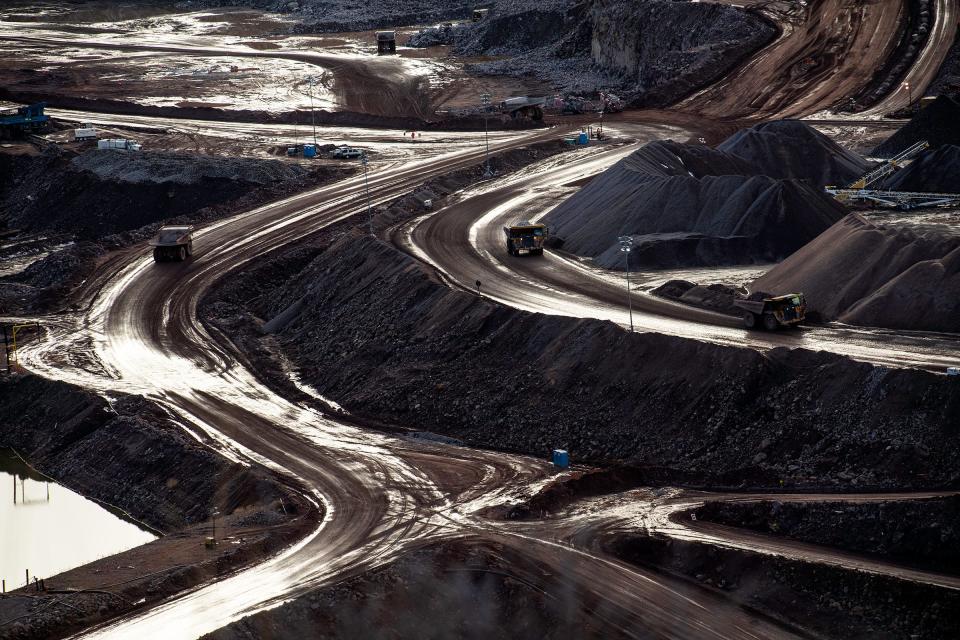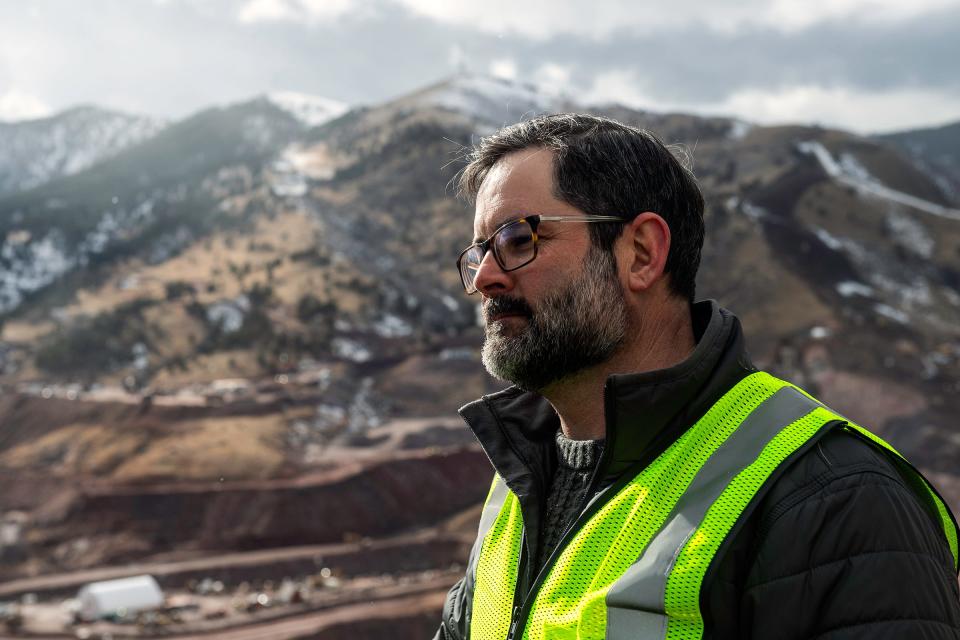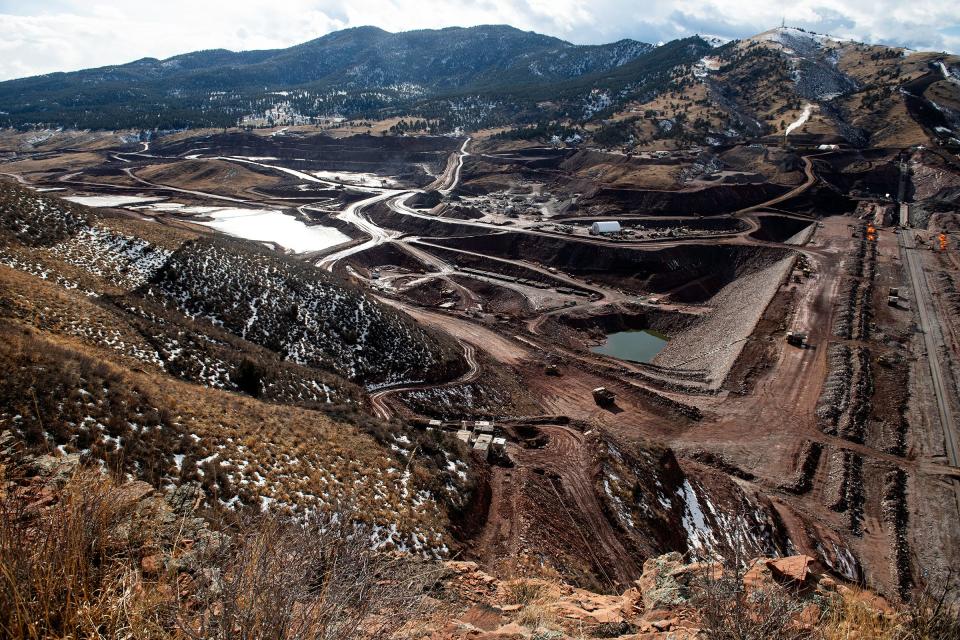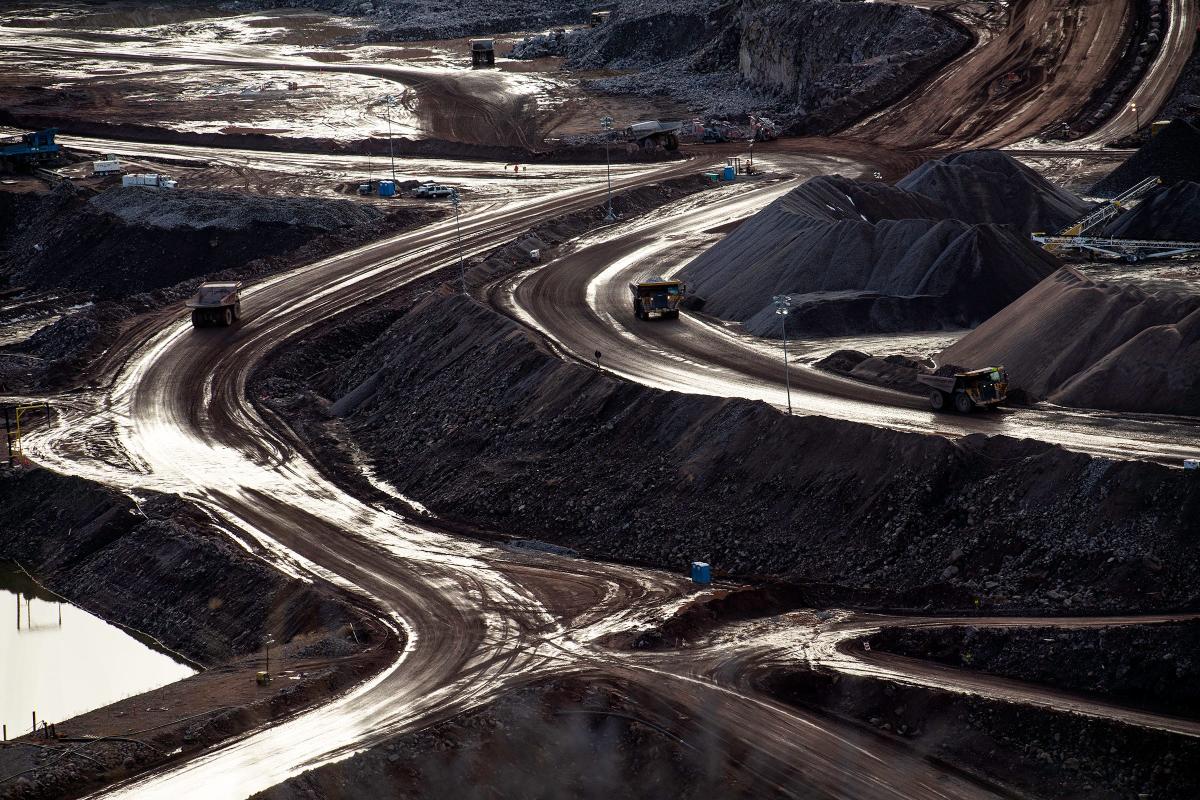The water delivery organization that serves more than 1 million people living in thirsty Front Range municipalities and more than 615,000 acres of irrigated acres on the Eastern Plains didn’t pick the site for the convenience.
“From an environmental standpoint with an off-channel reservoir, this property turned into the best site,” said Joe Donnelly, Northern Water’s project manager for Chimney Hollow. “There were minimal number of wetlands, no endangered species, one property owner (Hewlett-Packard), didn’t have to relocate anybody, no one living on the property and it’s right adjacent to our Colorado-Big Thompson infrastructure, so it was the best from all fronts.”
Planning for the site started in 2000 with the initial idea to build a West Slope reservoir and pump water to the east side of the Continental Divide, similar to the Colorado-Big Thompson Project’s existing water supply, the source of which is its Windy Gap Project from water rights in the Upper Colorado River.
“The more we looked at it, this made more sense,’’ Donnelly said. “Ninety percent of moisture falls on the West Slope but 90% of the people live on the east slope.’’
From farms to cities: Analysis shows Colorado-Big Thompson water right ownership changes
Chimney Hollow Reservoir is located 5 miles north and west of Carter Lake, another of Colorado-Big Thompson’s Front Range water storage reservoirs, which enabled the water company to tap into its existing infrastructure.
Still, Donnelly said cost of the 90,000-acre-foot reservoir will be $584 million for construction and another $166 million for environmental mitigation, engineering and cost of the property. The $750 million tab will be picked up by the 12 entities that will receive 30,000 acre feet of water when it’s up and running.
Broomfield is the largest permitted user of the water followed in order by Platte River Power Authority, Loveland, Greeley, Longmont, Erie, Little Thompson Water District, Superior, Louisville, Fort Lupton, Lafayette and Central Weld County Water District.
For comparison, Horsetooth Reservoir has 156,735 acre feet of water available and Carter Lake 112,230.
Northern Water’s future Glade Reservoir northwest of Fort Collins is part of its Northern Integrated Supply Project. It will cost $2 billion and deliver 40,000 acre feet of water annually with a 170,000 acre feet capacity when completed, Donnelly said. The cost is mainly due to more water storage and increased infrastructure, including nearly 100 miles of pipe and five pump stations needed to move the water around Northern Colorado.
‘You look down there and it looks like an orchestra’

Peering from an overlook hundreds of feet into the scarred landscape, the activity resembles a cartoon busy town.
Mammoth excavators load a continuous assembly of 18 100-ton behemoth haul trucks with granitic rock. The trucks drive on roads in synchronized pattern to build the massive main dam (more on the size later).
They drop the granite in piles, then massive bulldozers push the rock into place and giant vibratory compactors condense the material into an impregnable layer.
The granite is drilled and blasted daily from the onsite 80-acre quarry and trucks haul 62,000 tons of rock per day, making it one of the largest mining operations in Colorado, Donnelly said. To stay on schedule, crews must dump a 100-ton load every 2 minutes, 20 hours a day, for 2 1/2 years.
The quarry supplies all the materials needed for dam building, concrete and asphalt. The material is graded by geologists to determine waste from rock used for various purposes.
The busy town comes complete with its own concrete plant, asphalt plant and mechanic shop where 30 mechanics work around the clock to keep the 180 pieces of large equipment and several hundred more pieces of light-duty equipment running, Donnelly said.
“You look down there and it looks like an orchestra,” he said. “Everyone has their duty running where they need to go.”
And it will only get busier. Currently, winter hours are 10-hour shifts seven days a week. Come April 1, there will be double shifts working 24 hours a day, six days a week.
Barnard Construction based in Bozeman, Montana, is the general contractor and has 500 workers on site to build the reservoir southwest of Loveland.
The valley formerly owned by Hewlett-Packard for company retreats largely conceals the noise created by all that busy-town activity.
“One of the reasons Chimney Hollow is a good property is we don’t have many neighbors,” Donnelly said. “It’s really contained in this valley. If you step away from the edge of this cliff, you can barely hear the construction. We work hard to be good neighbors, making sure we obey the speed limits, keeping the dust down, keeping noise down and vibrations. We are monitoring all those types of things at four locations around site to make sure we are within county ordinances and not being a nuisance.”
Chimney Hollow’s dam to be among tallest in Colorado


Currently, the main dam is 160 feet tall. Donnelly said by mid-March, it should be halfway to its eventual height of 350 feet, which is more than 100 feet taller than Horsetooth Reservoir’s tallest dam. The length is 3,700 feet long, or about 10 football fields.
Donnelley said it’s the tallest new dam being built in the U.S. and eventually will become the fourth-tallest dam in Colorado.
The reservoir site also was selected because of a unique characteristic.
The walls on the east side of the valley that is becoming the reservoir are made of soft red sandstone such as can be seen at Devil’s Backbone Open Space and Red Rocks Amphitheatre.
The west wall of the valley is hard granite, which makes for good dam building.
“The granite is the beginning of the Rocky Mountains where you see the mountains rise,” Donnelly said. “Our quarry is located entirely in the granitic area, and we only mine up as far as the eventual waterline.’’
The main dam is unique in another way.
Many of the dams in the area are clay-core structures, such as those at Horsetooth Reservoir and Carter Lake.
But because the Chimney Hollow site was lacking in a sufficient amount of clay, Northern Water decided to have built an asphalt core rock fill dam. Donnelly said it’s only the second such dam in the U.S. though the technology has been used extensively around the world.
That process entails using a special hydraulic asphalt mix, unlike brittle paving concrete, to create a flexible, low permeability core that runs through the middle of the length of the dam.
Northern Water hired a Swiss company to build the dam’s asphalt cores. The company had to ship its own asphalt batching plant and testing lab from Zurich, Switzerland, to the site.
In addition to the asphalt core that will run the height of the dam, a concrete plinth, or heavy base, running the 3,700-foot length along the center of the dam was completed this winter. It included 10,800 cubic yards of concrete and serves to tie together the dam’s above-ground materials to the below-ground structure providing a watertight connection between the dam’s asphalt core and grout curtain that runs 235 below the dam foundation.
A saddle dam being built on the south side of the valley consisting of clay-core and rock will be 40 feet tall when completed.
A spillway to move water away from the main dam face in case of major precipitation events is located west of the dam.
More: Environmental aspects Chimney Hollow, Northern Colorado’s biggest new reservoir, will likely be one of its last
Chimney Hollow’s water won’t just be for drinking and irrigating. Here’s how recreation will be managed.


On-site construction of Chimney Hollow began in August 2021 and Donnelly expects construction to be complete in late summer of 2025. After that, water will begin to be pumped into Northern Colorado’s newest reservoir.
“We estimate it will take about three years to fill it, but it depends on what Mother Nature gives us,” Donnelly said. “It could be a little quicker and it could be a little longer.
Larimer County and Northern Water jointly purchased the 3,500-acre property in 2004 from the former Hewlett-Packard company, which was going to use it as a retreat center before abandoning the idea. Cost was $3.8 million with nearly $1 million of that coming from Great Outdoors Colorado Lottery money.
Larimer County will manage the land and water recreation on the Chimney Hollow Open Space recreation area. The parcel will provide day-use recreation, including hiking and horseback riding as well as fishing and nonmotorized boating.
Larimer County Natural Resources is preparing a management plan for the open space.
Larimer County’s largest reservoirs
-
Glade Reservoir: Proposed. Cost: $2 billion; 170,000 acre feet of water storage.
-
Horsetooth Reservoir: Built between 1946-49 and began storing water in 1951. Cost: $20 million; 156,735 acre feet of water storage.
-
Carter Lake: Construction 1950-52. Cost: $3.7 million; 112,230 acre feet of water storage.
-
Boyd Lake: Construction 1905-1909. In 1926, it was sold to the Greeley & Loveland Irrigation Company for $285,000. It became a state park in 1965. 111,100 acre feet of water storage.
-
Chimney Hollow: 2025. Cost: $750 million; 90,000 acre feet of water storage.
This article originally appeared on Fort Collins Coloradoan: A look at Chimney Hollow, Larimer County’s newest reservoir
